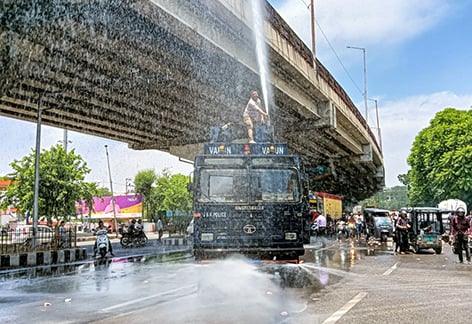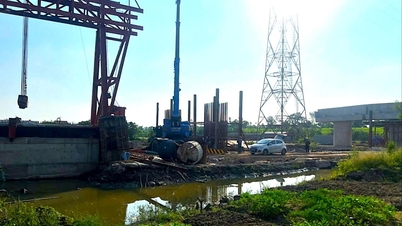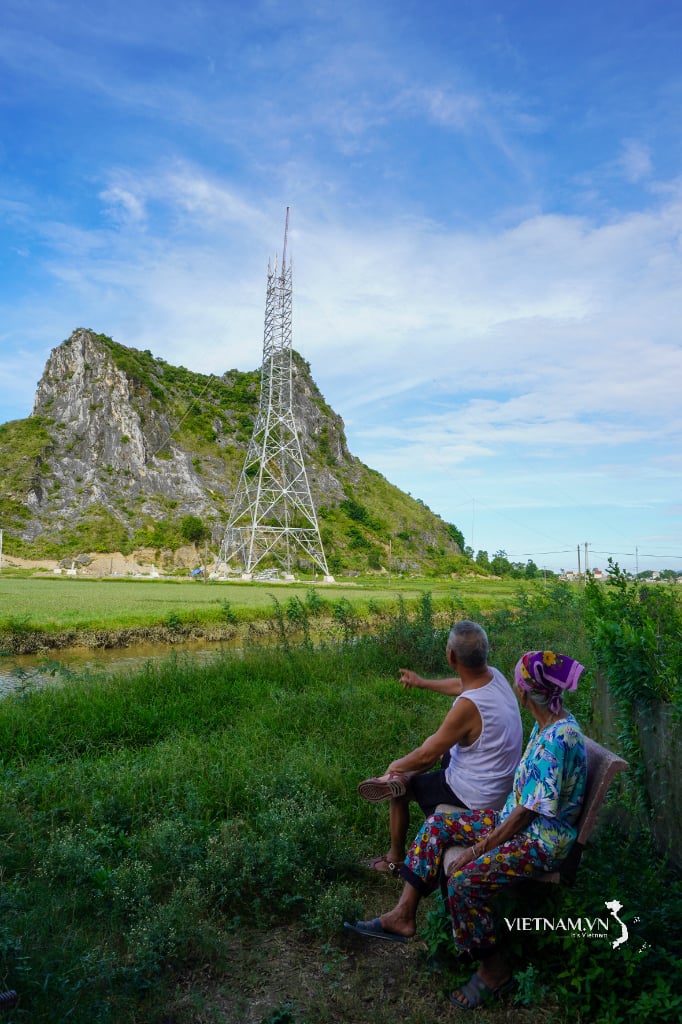Hundreds of people in India have died in record heatwaves above 50 degrees Celsius.
Police in the Union Territory of Jammu and Kashmir, northern India, used water-spraying vehicles to cool down the heat on May 29. Photo: ANI
The heatwave in India has been at its peak in the past three weeks, with the highest daily temperature continuously setting new records, while the average temperature has also been very high. On May 29, the highest temperature recorded at the meteorological station in Mungeshpur, on the outskirts of the capital New Delhi, was 52.90C, a new record in the country. The average temperature in the past two weeks in northern India has been between 42-480C.
Scientific studies have shown that night temperatures above 300C do not give the human body time to recover from the hot sun during the day; therefore, people quickly feel tired, dehydrated, and affect the nervous system and resistance.
Although there are no complete statistics, Indian media reported that the number of deaths due to heat shock, dehydration, and sunstroke in this country during this year's severe heat wave has reached hundreds.
The heatwave in India coincided with the country’s six-week parliamentary elections, which has led to a surge in deaths from heat-related illnesses. During the final rounds of voting, many election officials died from the heat.
Although summer in India has long been considered a harsh time of year, given the weather developments in recent times, it can be said that this South Asian country is experiencing unusually extreme weather phenomena.
Some experts believe that the post-El Nino warming of 2023-2024 has contributed to the higher than normal temperatures in northern India this year. According to scientific explanations, El Nino reduces the amount of monsoon in India because the Walker circulation weakens, disrupting the flow of moist air from the Indian Ocean to the Indian subcontinent. This, in turn, reduces the moisture content of the wind, thus creating drier weather and climate conditions.
Another reason for India’s rising temperatures is the rapid loss of forest cover. According to Global Forest Watch, India lost 2.33 million hectares of forest between 2001 and 2023, which is equivalent to a 6% reduction in forest cover since 2000.
Finally, increasing urbanization, which leads to urban heat islands, exacerbates the problem. A recent study published in the journal Nature found that urbanization alone has increased the warming in Indian cities by 60%.
The prolonged heatwave has led to severe water shortages for domestic and industrial use. Scorching temperatures from March to May have devastated crops, such as the 2022 heatwave that reduced India’s wheat production by about 4.5%. One estimate suggests that India lost $18.4 billion worth of food in the 2020-21 financial year, a fifth of which was rotten fruit. This has contributed to double-digit increases in vegetable prices in India’s markets over the past eight months, putting pressure on the cost of living and forcing consumers to rely on cheaper, less nutritious sources of nutrition.
India has proposed many solutions to deal with the heat, but the problem of resources to implement will be a major obstacle for the country to limit the impact of extreme weather. India's last hope is still the early arrival of the monsoon to solve the difficult problems caused by the heat.
HN synthesis
Source






![[Photo] General Secretary To Lam visits Kieng Sang Kindergarten and the classroom named after Uncle Ho](https://vphoto.vietnam.vn/thumb/1200x675/vietnam/resource/IMAGE/2025/10/09/1760023999336_vna-potal-tong-bi-thu-to-lam-tham-truong-mau-giao-kieng-sang-va-lop-hoc-mang-ten-bac-ho-8328675-277-jpg.webp)

![[Photo] President Luong Cuong attends the 80th Anniversary of the Traditional Day of Vietnamese Lawyers](https://vphoto.vietnam.vn/thumb/1200x675/vietnam/resource/IMAGE/2025/10/09/1760026998213_ndo_br_1-jpg.webp)















![[VIDEO] AI version of BSR General Director Nguyen Viet Thang: From the mission of energy shield to the desire to contribute](https://vphoto.vietnam.vn/thumb/402x226/vietnam/resource/IMAGE/2025/10/10/1760062415027_0000371c-f2a1-31a0-38a9-e3de0ece2bbd.jpeg)









































































Comment (0)